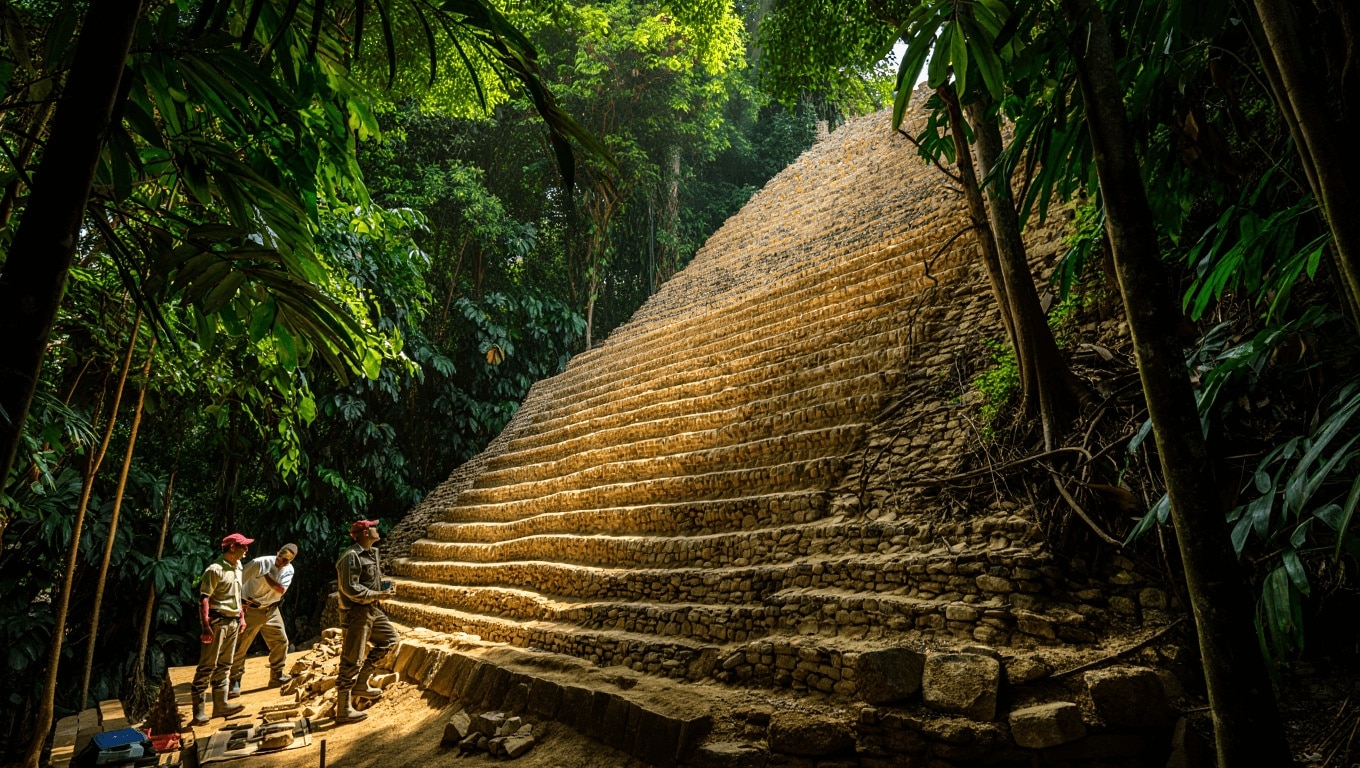In the lush landscapes of Tabasco, Mexico, a groundbreaking discovery has emerged that could rewrite the history of early Mesoamerican urban development. Archaeologists have unearthed what is now considered the largest and oldest known Maya structure, Aguada Fénix. This monumental platform, hidden for over three millennia beneath dense vegetation, extends a staggering 1,400 meters in length and 400 meters in width. This find not only challenges previous notions about the origins of Maya cities but also sheds light on the societal structures of ancient times.
Revealing the Ancient Maya Civilization
Pluto TV’s Hidden Movie Section Rivals Premium Services
Korean Netflix Has 200+ Shows US Version Doesn’t Stream
Aguada Fénix’s sheer size and the time period of its construction suggest it was built before the advent of powerful kings and hierarchical elites, commonly thought necessary for such large-scale constructions. Published in Science Advances, the findings indicate a significant shift at the dawn of Maya civilization, emphasizing communal effort over hierarchical command. Takeshi Inomata, the study’s lead author from the University of Arizona’s School of Anthropology, highlighted the importance of these revelations. He proposed that massive constructions were likely achieved through community collaboration, rather than the top-down approach previously assumed.
Understanding the Cosmogram
The layout of Aguada Fénix includes intriguing internal designs, with crosses within crosses forming a symbolic scheme known as a cosmogram. This design reflects the ancient Maya’s understanding of the universe and their perception of time, suggesting a deep connection between their cosmological studies and everyday life.
International Collaboration in Uncovering History
Netflix reveals economics behind 3-season cancellations as viewership metrics drop
YouTube Premium Originals Nobody Talks About Are Award-Winning
The research was spearheaded by Takeshi Inomata and Daniela Triadan, also from the University of Arizona, alongside a diverse team of international experts. Collaborators included Verónica Vázquez López from University College London, Melina García Hernández and Atasta Flores from the Middle Usumacinta Archaeological Project in Mexico, Claudia Alvarado from the College of Morelos, Mexico, and Ashley Sharpe from the Smithsonian Tropical Research Institute in Panama. Contributions also came from scientists in Japan, representing prestigious institutions such as the University of Tokyo and Okayama University of Science.
The Role of LiDAR Technology
To unearth the hidden secrets of Aguada Fénix, researchers utilized LiDAR technology, which uses laser scanning from the air to penetrate vegetation cover and reveal underlying structures. This advanced technology helped map a vast network of channels, terraces, and smaller connected structures, highlighting the site’s sophisticated planning and engineering. Further excavations at the site allowed the team to uncover ceremonial uses of the space, including a cross-shaped pit with offerings, which were crucial in confirming and dating the cosmogram and other features of the site.
Through meticulous analysis, including radiocarbon dating and statistical modeling, scientists pinpointed the construction of Aguada Fénix to between approximately 1050 and 700 BC, establishing it as the region’s oldest monumental structure. The collaborative nature of the project underscores the potential for community-driven achievements in the absence of authoritarian leadership, suggesting that early Maya society might have been more egalitarian than previously thought.

Daniel Harris is a specialist journalist focused on the crossroads of breaking news, extraordinary history, and enduring legends. With a background in historical research and storytelling, he blends timely reporting with timeless narratives, making complex events and ancient myths resonate with today’s readers. Daniel’s work often uncovers surprising links between present-day headlines and legendary tales, offering unique perspectives that captivate diverse audiences. Beyond reporting, he is passionate about preserving oral traditions and exploring how extraordinary stories continue to shape culture and identity.

